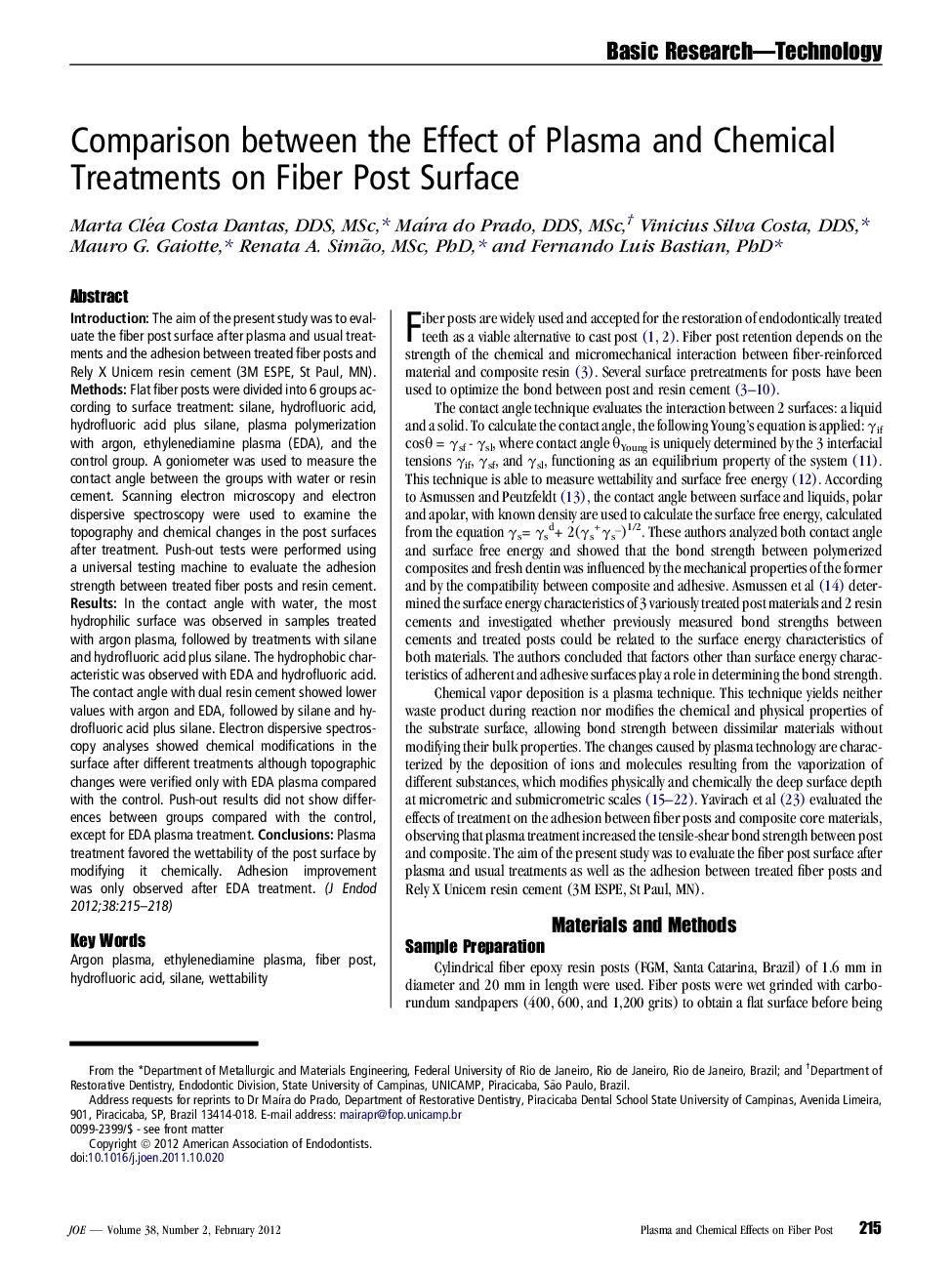| Article ID | Journal | Published Year | Pages | File Type |
|---|---|---|---|---|
| 3149058 | Journal of Endodontics | 2012 | 4 Pages |
IntroductionThe aim of the present study was to evaluate the fiber post surface after plasma and usual treatments and the adhesion between treated fiber posts and Rely X Unicem resin cement (3M ESPE, St Paul, MN).MethodsFlat fiber posts were divided into 6 groups according to surface treatment: silane, hydrofluoric acid, hydrofluoric acid plus silane, plasma polymerization with argon, ethylenediamine plasma (EDA), and the control group. A goniometer was used to measure the contact angle between the groups with water or resin cement. Scanning electron microscopy and electron dispersive spectroscopy were used to examine the topography and chemical changes in the post surfaces after treatment. Push-out tests were performed using a universal testing machine to evaluate the adhesion strength between treated fiber posts and resin cement.ResultsIn the contact angle with water, the most hydrophilic surface was observed in samples treated with argon plasma, followed by treatments with silane and hydrofluoric acid plus silane. The hydrophobic characteristic was observed with EDA and hydrofluoric acid. The contact angle with dual resin cement showed lower values with argon and EDA, followed by silane and hydrofluoric acid plus silane. Electron dispersive spectroscopy analyses showed chemical modifications in the surface after different treatments although topographic changes were verified only with EDA plasma compared with the control. Push-out results did not show differences between groups compared with the control, except for EDA plasma treatment.ConclusionsPlasma treatment favored the wettability of the post surface by modifying it chemically. Adhesion improvement was only observed after EDA treatment.
